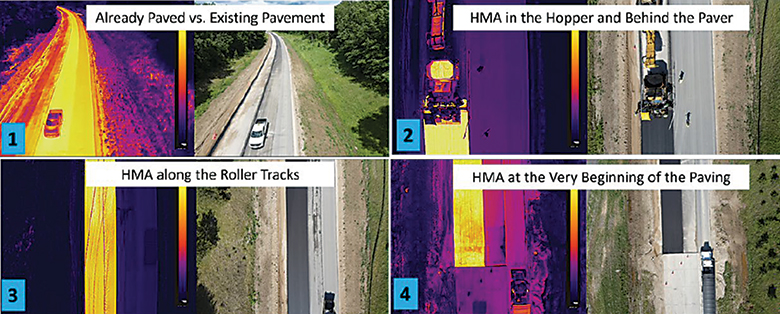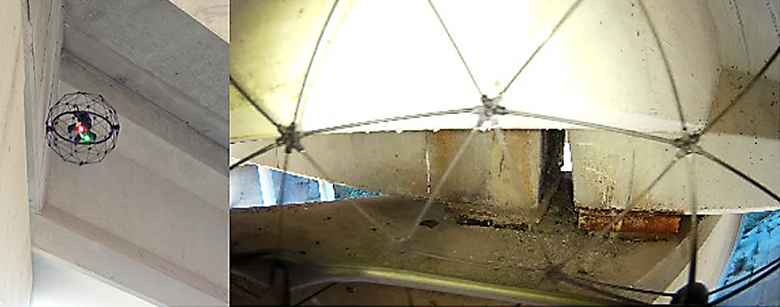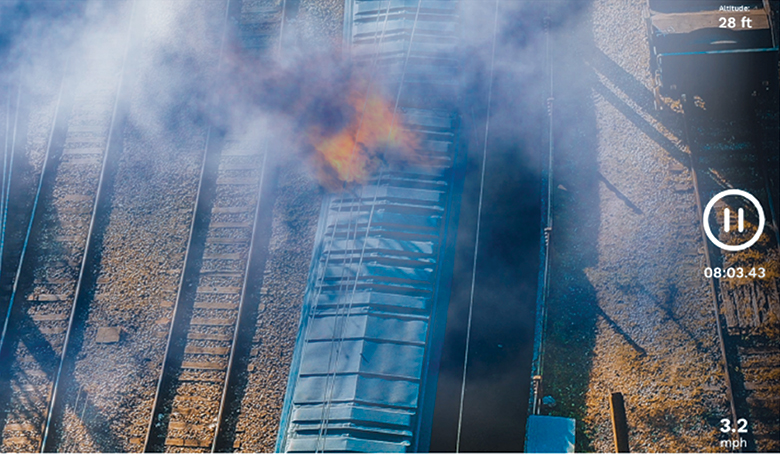Using Uncrewed Aircraft Systems to Remotely Inspect Tracks and Highway-Rail Grade Crossings
The U.S. DOT Volpe Center and U.S. DOT’s SBIR Program Leverages Innovation to Advance Transit Safety Improvements

U.S. DOT’s Small Business Innovation Research (SBIR) program awards more than $10 million annually to small businesses to enable research on and development of innovative solutions to our nation’s transportation challenges. The highly competitive program encourages small businesses to explore their technological potential and provides the incentive to profit from its commercialization.
Small businesses that participate in the SBIR program have developed numerous new and innovative technologies that have benefited U.S. DOT and the public, while providing a basis for growth for small businesses. The U.S. DOT Volpe Center administers the SBIR program on behalf of U.S. DOT and partners with funding operating administrations and small businesses alike in working toward a successful outcome that can benefit the nation’s transportation system.
One highlight stemming from U.S. DOT’s 2023 SBIR program was seeing the transferability of research applications in a technology like uncrewed aircraft systems (UAS), such as drones, from one mode to another. While UAS applications are expanding commercially, there’s untapped potential in public transit contexts. Most transit agencies do not have dedicated UAS programs, and there’s often limited opportunities for information sharing among transit stakeholders, including transit agencies, state DOTs, and federal modes. But the potential safety implications for leveraging UAS in transit are huge. For example, what if during a subway tunnel collapse, a transit agency track inspector could send up a drone to help identify track hazards? Or if rescue personnel could send in a drone to help locate injured people?
In 2023, two FTA-sponsored SBIR Phase III projects were initiated that iterate on previous FRA-funded Phase II research focused on UAS for highway-rail grade crossing data collection. This mutual interest in UAS across two modes showcases how the SBIR program’s research can benefit the greater transportation industry—and for part of the work, the U.S. DOT Volpe Center team was able to apply past SBIR applications for modal research to drive even deeper impacts and efficiencies.
As FTA began considering how to best support UAS adoption for public transit agencies and prompt UAS technology advances, the U.S. DOT Volpe Center team prepared a UAS technology roadmap for FTA, using input from transit stakeholders to identify existing UAS usage, potential use cases, and barriers to implementation. This roadmap laid out a series of steps that FTA could take to support research and development, as well as information sharing, to support UAS usage in transit. In parallel, FTA leveraged an SBIR Phase III contract to conduct research with small businesses on use cases for UAS in public transit contexts. This Phase III research focused on the transit-specific needs outlined in the roadmap, such as using UAS in low-lighting conditions like subway tunnels.
This FTA-funded work came out of cross-modal learning: FRA previously had funded research with small businesses through SBIR Phase I and II contracts researching UAS use in railroad track inspections. These early-stage FRA-funded applications laid the groundwork for FTA to fund SBIR Phase III contracts with small businesses to research public transit applications of these systems. FTA used the Crossing-I SBIR project by the Michigan Tech Research Institute (MTRI) and the Aerial Crossing Inspection System (AXIS) project by VisioStack will partner with public transit agencies, such as Chicago Transit Authority, in their respective areas in Michigan and Chicago to develop use-cases for their inspection systems.
Both projects aim to develop robust, drone-based inspection systems for transit agencies. Specific results include enhanced flight navigation capabilities for GPS-denied regions, integration of a spotlight payload for low-light and tunnel inspections, and a mobile app to control the system and view feedback from onboard payloads.

The project addresses the challenge of ensuring safety at highway-rail grade crossings and in transit rail systems, where incidents between trains, vehicles, and pedestrians can occur. While both programs are working on adapting their technologies to public transit environments and using artificial intelligence to analyze imagery, they each have different aspects to address.
- VisioStack’s AXIS research is currently targeting flight capabilities in GPS-denied locations, low-light conditions, conducting track and assist operations when transit cars catch fire, and improving its mobile application.
- MTRI Crossing-I focuses on automated monitoring and developing sensors that work in conjunction with traditional optical sensors.

These efforts will enable transit agencies to perform safer and more efficient inspections, especially in challenging environments. This innovative work will enhance response capabilities during emergencies, such as transit car fires, leading to improved safety and potentially preventing accidents.

Given the unique role in both administering the SBIR program across modes and partnering on the roadmap, the U.S. DOT Volpe Center team could apply past SBIR applications to work for FTA. The team that administers SBIR includes contract officers who work directly with the small businesses involved throughout all SBIR phases—both in the Phase I and II research for FRA and the Phase III work for FTA.
Bridging the gap between research and practical application, the SBIR program empowers innovative solutions to improve safety, efficiency, and overall performance across various transportation sectors, thus making a lasting impact on the industry and the public at large.
About the U.S. DOT Volpe Center
Celebrating more than 50 years of federal service to the nation, the U.S. DOT Volpe Center’s mission is to transform transportation for all.
We're Hiring: Learn more about our open job opportunities, our commitment to equity, and what it’s like to work at the U.S. DOT Volpe Center.
